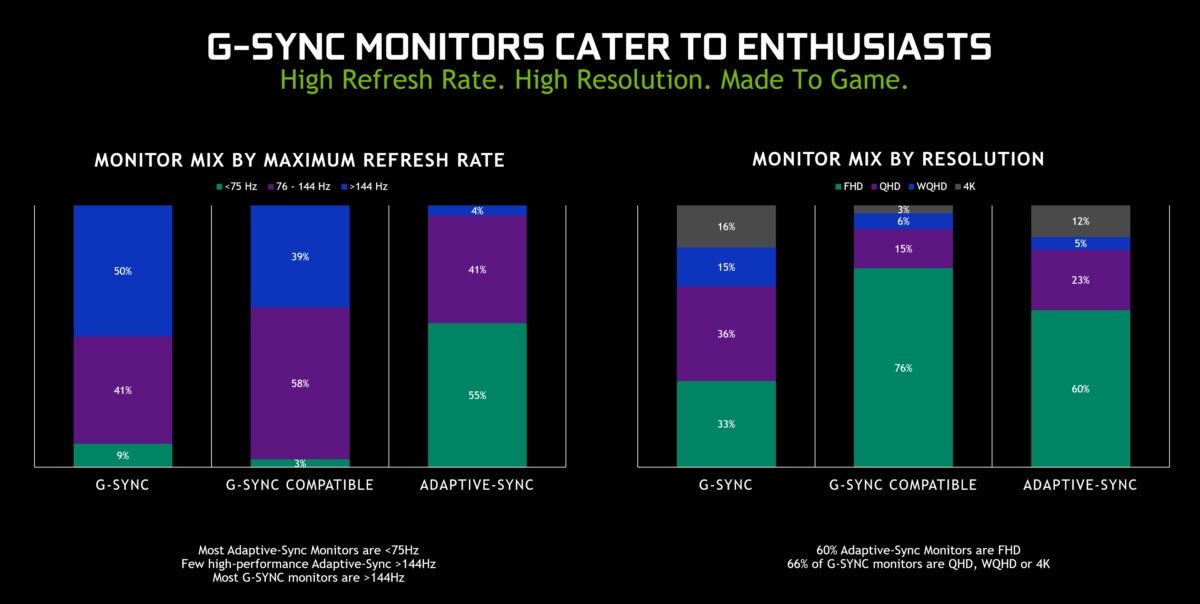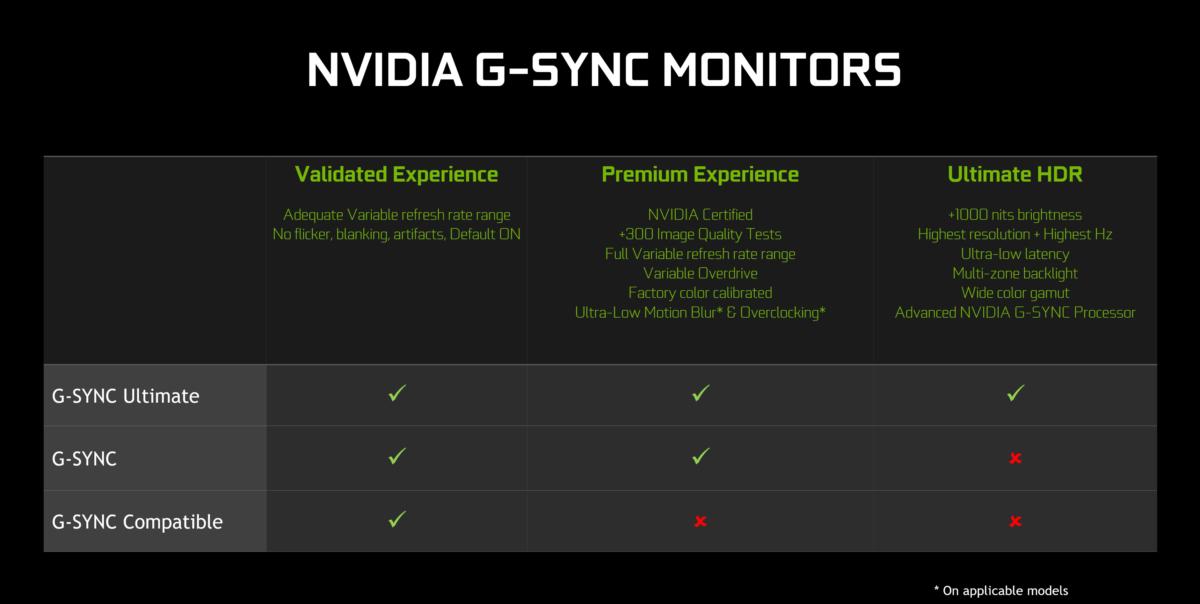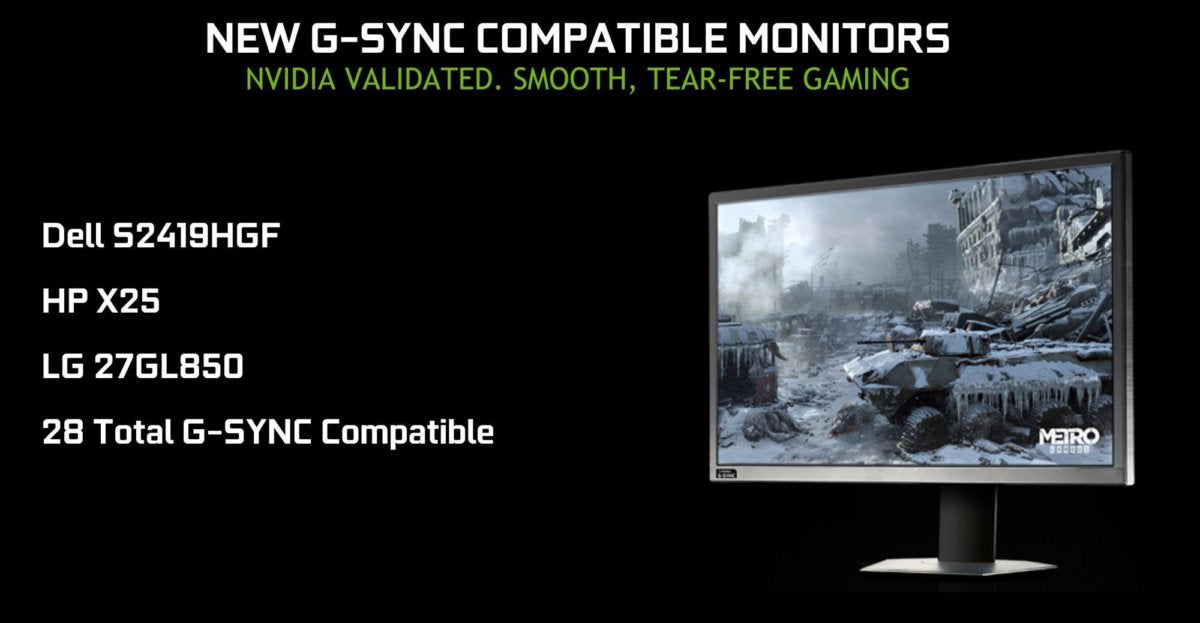There's good news for gamers hoping to pair their favorite FreeSync monitor with a GeForce graphics card: 28 panels now meet Nvidia's G-Sync Compatible validation requirements, unlocking the silky-smooth gaming benefits of adaptive sync technology without any headache, hassle, or extra work.
The bad news? Nvidia says that 475 of the 503 adaptive sync panels it examined as part of of “phase 1” of its G-Sync Compatible testing failed. That's essentially like having 5 percent a class pass the test and graduate. Ouch.
Nvidia’s G-Sync Compatible initiative supplements the company’s first-party G-Sync displays. G-Sync Compatible monitors are non-G-Sync displays that support the adaptive sync standard for variable refresh rates while gaming—AMD FreeSync monitors, essentially. Only models that meet Nvidia’s stringent standards achieve the label, and have variable refresh rates automatically unlocked on GeForce GPUs.
Why did so many FreeSync monitors fail? In a blog post detailing a list of issues, the company listed everything from image quality to insufficient variable refresh rate ranges.
- 28 passed
- 202 failed for image quality or "other" issues
- 273 failed for having insufficent Variable Refresh Rate ranges
Nvidia said it simply couldn't get hold the remaining available adaptive sync panels, as they don't appear to be manufactured anymore.
If you think this sounds as passive aggressive as your pretty friend telling you that your aren't that ugly, we'd tend to agree. Even though only 5 percent of G-Sync panels passed and can be considered as "G-Sync Compatible,” the blog post doesn't exactly pay them any compliments either.
 Nvidia
Nvidia"For G-Sync Compatible displays, we also noted the maximum refresh rates during testing, and the breakdown of passes and fails: over 300 failed monitors had a max 75Hz refresh rate or lower, and/or super slim VRR ranges, only 3 monitors that passed reached 120Hz, and the majority of the others had a refresh rate of 144Hz or higher," the post said. "However, 76% of these higher refresh rate G-Sync Compatible monitors run at only 1920×1080, limiting game detail and clarity.
“Furthermore, the majority of G-Sync Compatible monitors use TN displays, limiting fidelity, pixel response times, viewing angles, color accuracy, and a multitude of other display facets."
The post goes on to detail superior technologies found in Nvidia’s tightly managed G-Sync displays. Translation: You're certainly not that ugly, but you certainly aren't as pretty as me either.
 Nvidia
Nvidia For what its worth, we asked Nvidia officials if they thought this was kind of passive aggressive and one big sick burn on AMD's FreeSync technology. Officials denied it and said that no, they're actually being "aggressive."
And that's because, officials said, they're advocating for consumers by actually testing the vast majority of FreeSync panels out today—a process they point out isn't being handled by anyone else on the FreeSync side. And, by the way, Nvidia still lets consumers manually turn on adaptive sync with a GeForce card. The technology just won't activate automatically unless a monitor meets the company’s G-Sync Compatible requirements.
Despite Nvidia’s oblique FreeSync insults, the officials have a point. Having a Variable Refresh Rate range as wide as possible does dramatically improve the overall gaming experience on adaptive sync monitor. If so many FreeSync panels include such a limited VRR, you're just not going to often see the benefits of adaptive sync, Nvidia officials said. The blog post, unsurprisingly, highlights that G-Sync panels can run in sync from 1Hz to their their maximum refresh rate.
 Nvidia
NvidiaNvidia revealed three new G-Sync Compatible monitors as part of the announcement.
Don't think this is the end of the frenemy treatment from Nvidia either: the blog post calls this “Phase I Complete.” That implies a Phase II is coming. We have a pretty strong feeling it'll say something positive about FreeSync (or G-Sync Compatible) panels, while gently tossing shade their way, too.
Không có nhận xét nào:
Đăng nhận xét